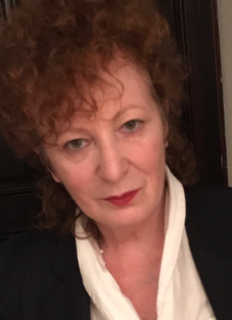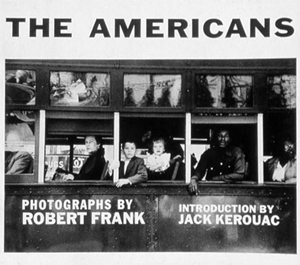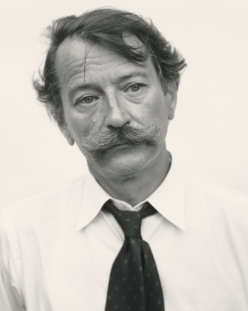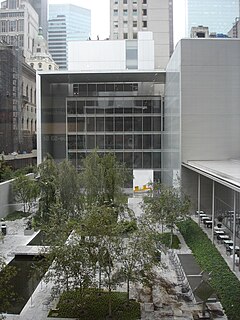
A rangefinder camera is a camera fitted with a rangefinder, typically a split-image rangefinder: a range-finding focusing mechanism allowing the photographer to measure the subject distance and take photographs that are in sharp focus. Most varieties of rangefinder show two images of the same subject, one of which moves when a calibrated wheel is turned; when the two images coincide and fuse into one, the distance can be read off the wheel. Older, non-coupled rangefinder cameras display the focusing distance and require the photographer to transfer the value to the lens focus ring; cameras without built-in rangefinders could have an external rangefinder fitted into the accessory shoe. Earlier cameras of this type had separate viewfinder and rangefinder windows; later the rangefinder was incorporated into the viewfinder. More modern designs have rangefinders coupled to the focusing mechanism, so that the lens is focused correctly when the rangefinder images fuse; compare with the focusing screen in non-autofocus SLRs.

Diane Arbus was an American photographer. Although Arbus's most famous subjects were outsiders such as transgender people, strippers, carnival performers, nudists, dwarves, and other marginalized people, she was equally drawn to subjects as ordinary as children, mothers, couples, old people, and middle-class families. She photographed her subjects in familiar settings: their homes, on the street, in the workplace, in the park. In his 2003 New York Times Magazine article, "Arbus Reconsidered," Arthur Lubow states, "She was fascinated by people who were visibly creating their own identities—cross-dressers, nudists, sideshow performers, tattooed men, the nouveau riche, the movie-star fans—and by those who were trapped in a uniform that no longer provided any security or comfort." Michael Kimmelman writes in his review of the exhibition Diane Arbus Revelations, "Her memorable work, which she did, on the whole, not for hire but for herself, was all about heart—a ferocious, audacious heart. It transformed the art of photography, and it lent a fresh dignity to the forgotten and neglected people in whom she invested so much of herself."

Nancy "Nan" Goldin is an American photographer. Her work often explores LGBT bodies, moments of intimacy, the HIV crisis, and the opioid epidemic. Her most notable work is The Ballad of Sexual Dependency (1986), which documents the post-Stonewall gay subculture and Goldin's family and friends. She lives and works in New York City, Berlin, and Paris. She is bisexual.
Street photography, also sometimes called candid photography, is photography conducted for art or enquiry that features unmediated chance encounters and random incidents within public places. Although there is a difference between street and candid photography, it is usually subtle with most street photography being candid in nature and some candid photography being classifiable as street photography. Street photography does not necessitate the presence of a street or even the urban environment. Though people usually feature directly, street photography might be absent of people and can be of an object or environment where the image projects a decidedly human character in facsimile or aesthetic.
Tony Ray-Jones was an English photographer.
Lee Friedlander is an American photographer and artist. In the 1960s and 1970s Friedlander evolved an influential and often imitated visual language of urban "social landscape," with many of his photographs including fragments of store-front reflections, structures framed by fences, posters and street signs.

A snapshot is a photograph that is "shot" spontaneously and quickly, most often without artistic or journalistic intent.
Documentary photography usually refers to a popular form of photography used to chronicle events or environments both significant and relevant to history and historical events as well as everyday life. It is typically covered in professional photojournalism, or real life reportage, but it may also be an amateur, artistic, or academic pursuit.

Stephen Shore is an American photographer known for his images of banal scenes and objects in the United States, and for his pioneering use of color in art photography. His books include Uncommon Places (1982) and American Surfaces (1999), photographs that he took on cross-country road trips in the 1970s.

Bruce Landon Davidson is an American photographer. He has been a member of the Magnum Photos agency since 1958. His photographs, notably those taken in Harlem, New York City, have been widely exhibited and published. He is known for photographing communities usually hostile to outsiders.

Mario Giacomelli was a self-taught Italian photographer and photojournalist in the genre of Humanism.
Fred Herzog is a Canadian photographer. He is known for his photographs of working class people and their connections to the city around them in Vancouver, British Columbia. Herzog is one of the pioneers of artistic color photography. He achieved moderate success earlier in his career, however his first major exhibition was at Vancouver Art Gallery in 2007, after which he produced a number of books.
Nathan Lyons was an American photographer, curator, and educator. He exhibited his photographs from 1956 onwards, produced books of his own and edited those of others.

Marvin Heiferman is an American curator and writer, who originates projects about the impact of photographic images on art, visual culture, and science for museums, art galleries, publishers and corporations.

The Ballad of Sexual Dependency is a 1985 slide show exhibition and 1986 artist's book publication of photographs taken between 1979 and 1986 by photographer Nan Goldin. It is an autobiographical document of a portion of New York City's No wave music and art scene, the post-Stonewall gay subculture of the late 1970s and early 1980s, the heroin subculture of the Bowery neighborhood, and Goldin’s personal family and love life.
New Documents was an influential documentary photography exhibition at Museum of Modern Art, New York, in 1967, curated by John Szarkowski. It presented photographs by Diane Arbus, Lee Friedlander and Garry Winogrand and is said to have "represented a shift in emphasis" and "identified a new direction in photography: pictures that seemed to have a casual, snapshot-like look and subject matter so apparently ordinary that it was hard to categorize".


















